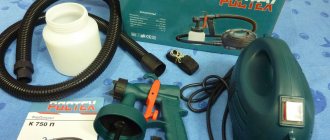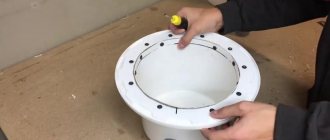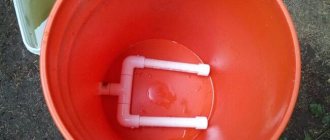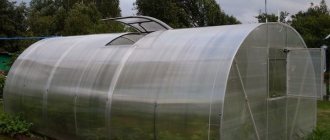Probably every housewife will agree that the house cannot do without such an important thing as a vacuum cleaner. Among the great variety of models, experts advise choosing ones with an aquafilter in order to get better cleaning results. With such models, dust absorption occurs more efficiently. They have recently become increasingly popular. If your model does not have a device that contains water, which allows for better cleaning, then do not be upset.
How does a water filter work?
Even if you recently purchased a vacuum cleaner without a water filter or you have a slightly outdated model at your disposal, don’t worry, below we’ll look at how you can make a water filter for your vacuum cleaner model with your own hands.
Vacuum cleaners with water filters: pros and cons
Recently, vacuum cleaners with aqua filters are incredibly popular. With their help, you can really clean not only, but even the air. When you use an aqua vacuum cleaner, it is not at all necessary to ventilate the room, because the air becomes completely clean after cleaning.
Perfect cleansing with water
Some modern models can form a large amount of foam, but this problem can be easily solved by having a high-quality defoamer. Before purchasing or independently converting a regular vacuum cleaner into an aquatic device, it is worth knowing all its features and advantages. The main ones include the following:
- device reliability
- quite long service life
- multifunctionality
- The aqua vacuum cleaner perfectly cleans the air and makes it humid
- has a high power rating
- does not require additional maintenance, which is expensive
- There is no unpleasant odor during operation
- it is very convenient to use.
Aqua vacuum cleaners also have some disadvantages, but they are minor and can be easily tolerated. The disadvantages of the device include:
- quite large parameters
- These vacuum cleaners are heavy
- are expensive
- may make loud noise.
Vacuum cleaner with water filter
On the website you can also read what products are available for washing vacuum cleaners.
Cyclone filter
The design of cyclone filters makes them much more convenient and efficient than conventional garbage disposals. Due to their spaciousness and hygiene, such purification systems are becoming increasingly popular. However, not everyone can afford the high cost.
The principle of operation is as follows: the air flow passes through primary filters, which trap small dust particles. Next, the air enters the cyclone filter - a container in which, under the influence of the vortex effect, larger particles of debris swirl and settle to the bottom under their own weight. At the outlet, the air is 98% purified.
Materials for production
The simplest way to make a cyclone filter is to use a plastic bucket as the main element. The volume is calculated quite simply. For every 100 W of power, add 1 liter of capacity.
Why do you need an aqua filter?
The essence of a water filter is that it not only fights dust, it also simultaneously performs wet cleaning, helps in the fight against bacteria, pathogens, pet hair, mites, and also fills the room with freshness, cleanliness and humidifies the air.
The essence of an aquafilter is a tank filled with water. The device has a separator that operates on the principle of a cyclone, thus setting the container of water in motion. The mechanism sucks in air contaminated with dust and dirt and passes it through the water in the tank. Thus, dust particles bind to water, the flow then passes through additional filters, and at the output we have clean, humidified air.
Unlike a conventional dry vacuum cleaner, a vacuum cleaner with a water filter must be cleaned after each use. To do this, you need to rinse the container and thoroughly dry all the filters that are in it. If this is done poorly, there is a possibility of bacterial growth.
Making an aqua filter from a pan and a plastic bottle, detailed instructions
You will need a pan, for example, made of aluminum, and a bottle with a capacity of five to six liters so that it fits in the pan. You will also need a hose and several screws.
Proceed according to the following scheme:
- it is recommended to remove the bottom of the pan to reduce the weight of the device;
- using self-tapping screws, the pan is attached by the handle to the vacuum cleaner at the air outlet;
- Holes are shot in a plastic container, a liter of water is poured, after which the bottle is placed in the pan;
- the first end of the tube is fixed to the vacuum cleaner, the second is lowered into the eggplant.
Water is poured into the pan, all the tubes are connected, and the lid is sealed. When the use of the vacuum cleaner is completed, the lid is removed, the dirty water is poured out, the container is cleaned and dried.
Even more useful tips are in the video:
Types of aquafilters
There are two types of water filters:
- Separate.
The work of this type of aqua filter is to separate air from dust particles due to centrifugal force. Contaminated particles that enter the filter remain in the water without entering the air of the living room. The main advantage of vacuum cleaners of this type is the higher quality of cleaning compared to others, and they are also durable. However, separate models are not cheap.
Separate filter
- Hookah bars.
Vacuum cleaners of this type have a fairly simple design. These devices cope better with coarse dust, but they have a hard time with fine dust. However, this drawback can easily be corrected by installing additional filters. One of the inconveniences of using a hookah filter is the need for frequent, systematic washing and high-quality drying. In addition, it is equipped with a fairly small liquid reservoir.
Aquafilter in a vacuum cleaner
Membrane filter
Filters of this type are used in many professional models of vacuum cleaners that do not have garbage collection bags. The main purpose of the membrane is to additionally purify the air flow before it enters the HEPA filter (to the last filtration section). Additionally, the membrane protects the entire device, preventing dust particles from entering the system and clogging other filters.
Materials for production
In order to make a membrane filter yourself, you will need a piece of dense material, which can always be purchased at a hardware store. In this case, it is necessary to take measurements in advance from the original dust collector, which requires replacement.
The density of the fabric can be increased by folding the fabric into several layers. Thick cardboard or plastic can be used as a base for the membrane bag. You can attach the filter to the base using one of the following methods:
- using glue that fixes the neck of the bag between two pieces of cardboard;
- using Velcro - in this case, you will need to first glue one part of the Velcro to the base, and sew the second to the bag itself.
How to make a filter for a modern vacuum cleaner with your own hands
If you decide to make a filter for a vacuum cleaner with your own hands, and the power of your home vacuum cleaner wants to be better, you can also correct it at the same time. What to do about it? First of all, it is necessary to replace the paper component on the incoming filter with a foam rubber one. This will enable the unit to suck in dirt and dust with greater force. With most inexpensive modifications of vacuum cleaners, suction power is lost due to the dense material on the filter. Therefore, it can also be replaced with a less dense one, thus increasing the overall power of the device. But at the same time, small particles of dust will linger on the filter just as well.
Before you start assembling a homemade aqua filter, you need to prepare all the materials you will need. Among them:
- Aluminum pan.
- A six-liter plastic water bottle.
- Three screws.
- Metal adapter.
- Flexible hose.
- Four screws.
So, let's start by cutting out a circle in the bottom of an aluminum pan. Its diameter should be about 3 cm smaller than the diameter of the pan. Next, you need to attach this structure to the vacuum cleaner with self-tapping screws in the place where the air comes out. First you need to drill holes in the pan.
Simple materials – great end result
Take a plastic bottle and put it in a saucepan. Several holes must be made in the eggplant so that clean, filtered air can escape. Pour about 1-1.5 liters of water into it. By analogy with a purchased vacuum cleaner, air contaminated with dust will penetrate through the water, in which the dirt will remain.
Using metal adapters and screws, this entire structure is attached to the exhaust port of the vacuum cleaner. On one side, we attach the corrugated hose to the adapter, and on the other, we make a slot in it, which will give the effect of a whirlpool inside the eggplant.
Let's look at two simple ways to make this type of filter
Option 1
To work you will need:
- an oil filter to retain fine dust (sold in car stores), - a 20-liter bucket with a well-closing lid, - one polypropylene elbow with angles of 45 and 90 degrees, - a meter-long plumbing pipe, - a two-meter corrugated pipe.
Operating procedure:
- Make a hole in the center of the bucket lid at a 90 degree angle. Here you need to connect the vacuum cleaner in the future.
- Fill the cracks with sealant.
- Make a hole on the side of the bucket and install a corner.
- The corrugation and the elbow will be connected by a pipe.
- To make the filter last longer, put nylon tights on it.
- Connect the elbow in the bucket lid and the filter outlet.
If the filter cannot be placed on the outlet pipe, you can use a rubber hose. It is recommended to use sealant to seal all connections.
Instead of a bucket, you can use a plastic barrel or tin container.
Option 2
To make this you need a traffic cone.
VIDEO
To work you need:
- traffic cone (sold in automotive stores),
- two rods 2 meters long and 8 mm in diameter,
- nuts and washers 8 mm,
- two corrugated two-meter tubes.
Operating procedure:
- Cut off the base of the cone and insert it upside down into the bucket.
- Insert the tube into the bucket. Fill the space between the tube and the cone with construction foam.
- Cut a square from a sheet of plywood 20 mm thick. It should be of such a size that the base of the cone fits on it, and there is a small margin left.
- Make holes with a diameter of 8 mm in the corners of the plywood square. Another hole is needed in the center for a tube on which a corrugated hose will be placed to secure the filter and the vacuum cleaner.
- Use a sheet of durable multi-layer plywood as a lid for the bucket. It should be firmly attached to the bucket. The edges of the sheet are covered with a layer of rubber.
- Make a hole in the lid to install the narrow end of the cone.
- The cone installed in the lid is fixed with foam and four rods.
- In the wide part of the base of the cone, make a hole for a tube that will connect to a corrugated hose. Debris from outside will subsequently flow through this hose.
Safety precautions
When making your own device, you can purchase factory-type parts and spare parts to save time and effort. But when installing filters, it should be taken into account that HEPA filters are not suitable for a homemade device, since such products can trap small dust particles in the pores of the filter itself. All this leads to the filling of filters with debris, and, consequently, the suction power will gradually decrease. The filter will be impossible to clean, since it will be difficult to blow out the dust, and when washed off, a rotting process may occur. Bacteria can also develop and cause an unpleasant odor during operation.
If a simple vacuum cleaner does not have a filter, then all this can lead to the opposite effect. If the vacuum cleaner does not have a filter, then the device must include an ideal cleaning system, and it will be very difficult to make one at home. Therefore, if a person needs a vacuum cleaner without a filter, then it is better to purchase it in a store rather than make it yourself. You cannot use the device if it is clogged with dust; in this case, you need to turn off the power and clean the device.
To optimize the operation of the device, you can connect 2 hoses. The first hose is for suction, and the second is for blowing. The second one can thoroughly clean different areas and hard-to-reach surfaces, since the blown dust will immediately be collected using a retracting hose.
To carefully clean stoves and fireplaces, it is recommended to use an ash vacuum cleaner. If you clean such places with a simple household vacuum cleaner, the device will quickly deteriorate. The filtration process will not be able to clean large ash particles, as a result, burning embers can burn through the garbage bag, heat up and deform the plastic body of the device. A simple vacuum cleaner will not have enough suction power to efficiently remove ash.
Let's look at some additional conditions for using homemade vacuum cleaners.
- Do not press the nozzle firmly against the area to be cleaned so that the vacuum cleaner does not heat up and reduce the quality of cleaning. The device must have access to air. During the work, you should also not push the nozzle sharply; you need to clean all places carefully and evenly.
- If the vacuum cleaner is not a detergent, it must not be used to clean liquids.
- If you hear an extraneous sound during operation, you need to turn off the device and check it.
These rules must be taken into account so that there are no problems with the device and it does not break.
How to make a vacuum cleaner from a bottle with your own hands, see the following video.
Advantages and dangers of homemade filters
Such improvements do not require much time and large financial costs. In some cases, installing a homemade filter will cost zero rubles - if all the necessary components are present on the farm.
A homemade filter will expand the functionality of the vacuum cleaner. The quality of cleaning will improve, and the model for dry cleaning will receive a wet function. In terms of its capabilities, a homemade filter is not inferior to factory ones, and sometimes even surpasses them.
However, homemade filters cannot always be installed. It is better to wait until the end of the warranty period and make sure that such modifications will not affect the energy consumption and load of the vacuum cleaner. Compatibility with robotic models has also not been confirmed.











